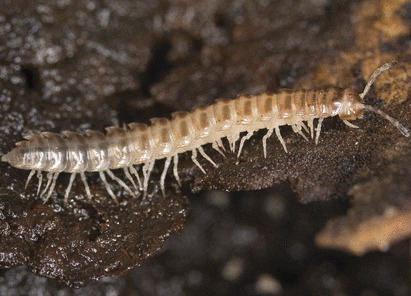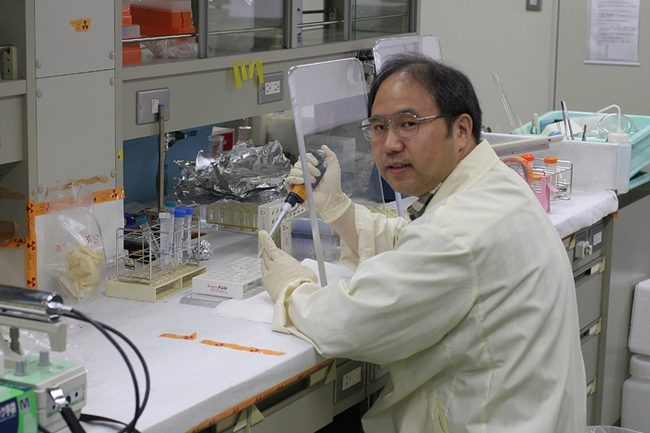
Chemical ecologist Yuko Ishida of Toyama, Japan, a former UC Davis post-doctoral researcher who shared the same lab--and the same bench--in Briggs Hall that Duffey did, is the lead co-author of a cover story recently published in the Proceedings of the National Academy of Sciences (PNAS) about an invasive species of millipede that secrets hydrogen cyanide as a defensive mechanism. (See research paper)
Ishida and Duffey never met but they shared a love of science and chemical ecology, in addition to the same lab.
At the time of his death, Duffey was a professor and vice chair of the UC Davis Department of Entomology. When chemical ecologist/professor Walter Leal joined the UC Davis Department of Entomology faculty in 2000, he occupied the former labs of professors Duffey and Susumu Maeda (1950-1998) and memoralized their lives and work by naming his lab the “Honorary Maeda-Duffey lab.”
Ishida worked in the Honorary Maeda-Duffey lab from May 2001 to November 2007 at UC Davis.
“Yuko loves to tackle challenging problems and he is well prepared to solve them,” said Leal, former chair of the UC Davis Department of Entomology and now with the UC Davis Department of Molecular and Cellular Biology.

Ishida also photographed the millipede, found in southern Japan, for the PNAS cover.
The four scientists all work at the Biotechnology Research Center and Department of Biotechnology, Toyama Prefectural University, and are affiliated with the Asano Active Enzyme Molecule Project, Exploratory Research for Advanced Technology, Japan Science and Technology Agency, Toyama.
“To discover more efficient and stable HNLs, we focused on the invasive cyanogenic millipede as a bioresource,” the scientists wrote. “The HNL identified from the millipede showed not only the highest specific activity toward benzaldehyde among known HNLs, including the almond HNL in industrial use, along with wide temperature and pH stabilities, but also high enantioselectivity in the synthesis of various cyanohydrins. These properties make it suitable as an industrial biocatalyst. Arthropods are likely to be valuable sources of potential biocatalysts for the next generation of industrial biotechnology.”

“There followed several papers on the biochemistry of HCN production and the production of other defensive compounds in these interesting animals,” they wrote. “After arriving at UC Davis, Sean began a long series of brilliant studies on the chemical mechanisms used by plants to fend off attack by insects and various pathogens. This work centered on resistance in tomatoes, and over the years he collaborated with numerous students and colleagues. Studies analyzed the role of numerous chemicals produced by plants including tomatine, proteinase inhibitors, and various plant oxidative enzymes. Recent studies had included analyses of induced defenses and the interactions of chemicals with the biological agents such as parasitoids and baculoviruses used in various IPM and biological control programs.”
“A constant theme and frequently emphasized message in Sean's work was the fact that chemical-biological interactions were rarely simple and straightforward,” they wrote. “He stressed that in order to understand plant-insect interactions, for example, it was necessary to understand the interactions among plant chemicals, the overall characteristics of the insect's diet, the physiological state of the insect, and the modifiable characteristics of plant and insect. Chemical and biological context and chemical mixture were seen as critical determinants of biological activity; a simple view that natural products functioned merely as "toxins" or isolated defensive factors was often misleading.”
Carey, Dingle and Ullman praised Duffey's "truly interdisciplinary research that included several joint projects with members of the Entomology Department and also with colleagues in the departments of Nematology Ecology and Plant Pathology. We all experienced Sean insisting over and over that interactions are not simple and that one must understand the chemistry, the physiology, and the ecology to really understand interactions between plants, insects, and their pathogens. Sean's legacy is an outstanding record of how to go about studying plant-insect interactions, not just the gathering of data on interactions that occur.”
The legacy continues...
Attached Images:
